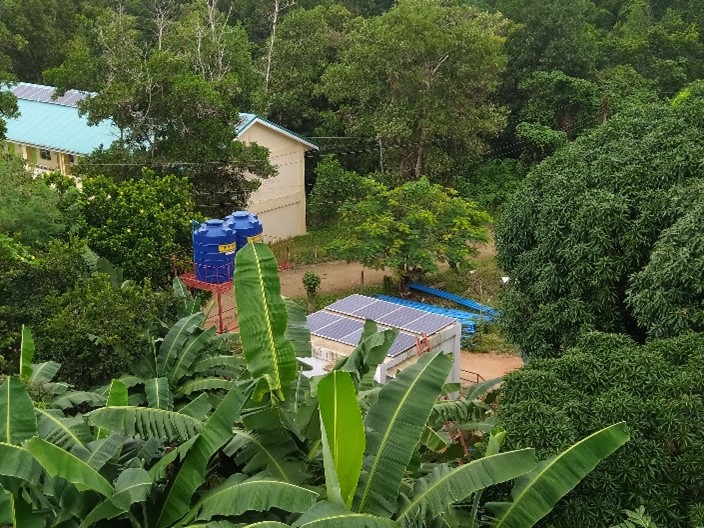The Department of Science and Technology (DOST) has provided a solar-powered purification system in a water refilling station built and managed by the local government unit in Dumaran Island in Palawan.

Despite being surrounded by vast expanses of water, 80.14% of households in Dumaran have no access to clean water for drinking and sanitation, posing a serious health risk to residents and a threat to the development of the remote island.
Dumaran Island is located off the northeastern flank of Palawan, approximately 34.1 kilometer from the mainland, and is accessible via pump boat for at least an hour, weather permitting.
As it is not connected to any water line, families have long struggled to have accessible quality and safe water. For years, most of them fetch water from deep wells, which they then purify using a makeshift filter made from containers, funnel, sand, and charcoal.
Those who can afford to travel to the mainland to buy purified water from refilling stations spend around P75.00 for a 5-gallon container plus the transportation cost. Some enterprising traders travel for about two hours across the sea to source out potable water from Roxas Water District and sell them inside the island for P40.00 to P45.00 per gallon.

The DOST’s MIMAROPA office led the setting up of water source and filter system which is connected to an existing water source in the area. The system employs two technologies — the solar-powered water pump and the water treatment machine.
The solar-powered water pump is driven by direct sunlight and has a built-in sensing device to maintain the required volume inside the storage tank. It is best suited for the area since power outages are frequent.
On the other hand, the water treatment machine performs water purification by removing solids and other contaminants in the water using the two-stage reverse osmosis process. Reverse osmosis (RO) is a water purification method that uses pressure to remove ions, large molecules, and other unwanted particles.
This membrane-filtration technology harnesses electricity. However, it only consumes little energy, so operating costs are relatively low.
The residents now enjoy accessible purified water which was offered for free several months after the installation. This 2021, a small fee will be collected from residents for the maintenance of the facility and sustenance of its operations. Since its operation in November 2020, a total of 20,000 liters of purified water has already been produced.

DOST-MIMAROPA also provided the local government unit an early warning system that makes use of the Automated Rain Gauge (ARG) and Water Level Monitoring Sensor (WLMS), to keep local authorities and the community more prepared, safe, and alert during weather disturbances.
The early warning device was installed in Alimoto Bridge, Brgy. Teresita to keep track of the water level and aid the LGU in planning for a course of action to take to reduce impacts of disasters in the area and save lives and properties. — Charlotte Pizarras, Athena Colline L. Verdey, Phyllicia Anne M. Baguyo




